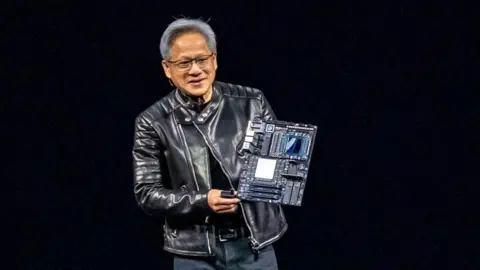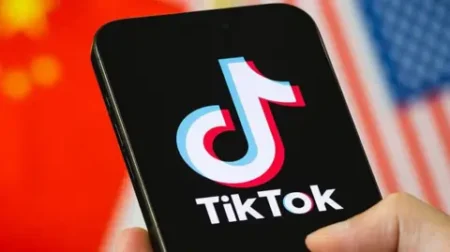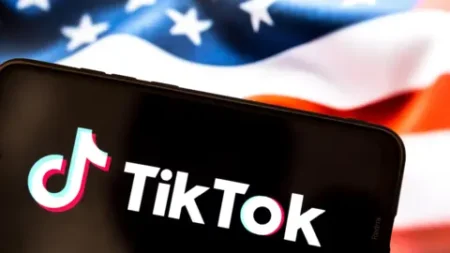Nvidia, a leading force in the computer chip industry, has emerged at the forefront of escalating tensions between the United States and China. The firm, renowned for its contributions to artificial intelligence (AI) technology, finds itself navigating a complex landscape shaped by both geopolitical interest and corporate strategy. Recently, Nvidia’s chief executive, Jensen Huang, made headlines when he traveled to Beijing for discussions with high-ranking Chinese officials. This trip coincided with the implementation of stringent US export controls targeting the company’s advanced semiconductors, particularly the H20 AI chip, which now requires special licenses for export to China. The US government justified these regulations by emphasizing their role in protecting national and economic security.
As the AI race intensifies, the significance of Nvidia’s technologies cannot be understated. The California-based company manufactures semiconductor chips crucial for driving generative AI applications, which can create new content seamlessly from simple user prompts, a capability epitomized by programs like ChatGPT. In recent years, the global demand for such AI chips has surged, catapulting Nvidia to become one of the most valuable companies in the world, momentarily surpassing Apple in market capitalization last November. Notably, the scrutiny over Nvidia’s interactions with China stems from the US government’s strategic aim to delay China’s advancements in AI technology, particularly concerning potential applications by the Chinese military.
The historical context of export controls on Nvidia’s products to China has deep roots, with prior measures instituted by the Biden administration as early as 2022. These regulations specified that advanced chips like the H100 were off-limits in the Chinese market. However, the recent emergence of DeepSeek, a Chinese generative AI startup, has raised alarms in the US about the potential for significant breakthroughs, even with less powerful chips. DeepSeek asserted that effective AI applications could be achieved using Nvidia’s less advanced H20 chips, prompting heightened interest from major Chinese tech companies, including Tencent, Alibaba, and ByteDance, which had already placed substantial orders for the chips.
Despite the anticipated losses, estimated around $5.5 billion due to these new restrictions, Nvidia’s operations reflect resilience in the face of regulatory challenges. Senior analyst Chim Lee highlighted that alternative AI chips being developed in China might not yet match Nvidia’s capabilities but could improve as the country focuses on self-sufficiency in semiconductor technology. This vital shift means that while US restrictions may pose immediate difficulties for China, they will not entirely halt the nation’s technological advancements.
Huang’s visit to China underlines the significance of the Chinese market for Nvidia, which accounted for 13% of the company’s sales last year. This engagement is an attempt to reassure stakeholders of Nvidia’s commitment to fostering relationships within China, especially in light of the recent curbs. In meetings with government officials, Huang expressed optimism about continuing collaboration with Chinese firms, aiming to navigate the complexities of trade restrictions.
The implications of such export controls extend beyond corporate dynamics, as they reflect a broader US strategy aimed at de-risking advanced technology supply chains from China. Emerging trends indicate a deliberate move toward reshoring semiconductor production within the US, as demonstrated by Nvidia’s announcement of a significant investment in AI server infrastructure. Additionally, Taiwanese semiconductor giant TSMC echoed this sentiment, declaring its intention to invest substantially in manufacturing capabilities in Arizona.
In conclusion, the competition between the US and China in the semiconductor and AI domains is evolving into a dichotomy of technological systems, with increasing polarization expected in the global tech landscape. As each nation seeks to leverage its strengths in AI and semiconductor capabilities, the outcome of these tensions will likely shape the future trajectory of innovation and economic power in a techno-political context where restrictions and collaborations coexist. Understanding these dynamics is crucial as both governments and corporations maneuver through the complex interplay of technology, security, and global commerce.











